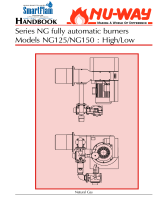
PO Series ContentsPage A.2
CC
CC
CONTENTSONTENTS
ONTENTSONTENTS
ONTENTS
IMPORTANT INFORMATION .............................................................................. A.4
SAFETY ................................................................................................................... A.4
EMERGENCY INSTRUCTIONS ........................................................................................ A.4
EUROPEAN BOILER EFFICIENCY DIRECTIVE (B.E.D.) ........................................................ A.4
GENERAL INFORMATION ................................................................................. B.1
INTRODUCTION ....................................................................................................... B.2
FEATURES ............................................................................................................... B.2
Burner Designation ..............................................................................................................B.2
Burner Capacity ...................................................................................................................B.2
Fuel .....................................................................................................................................B.2
Controls...............................................................................................................................B.2
Operating Mode ..................................................................................................................B.2
SITE CONDITIONS AND SERVICES ................................................................................ B.3
Flue and Chimney Requirements .........................................................................................B.3
Plant Room Ventilation ........................................................................................................ B.3
Existing Appliances ..............................................................................................................B.3
Oil Supply ...........................................................................................................................B.3
Electrical Power Supply ........................................................................................................B.4
BURNER PACKAGING, ASSEMBLY AND INSTALLATION ........................................................ B.4
Packaging For Transit ............................................................................................................B.4
Assembly And Installation ....................................................................................................B.4
Fitting To The Appliance.......................................................................................................B.4
Air Supply ............................................................................................................................B.5
Combustion Chamber Conditions ........................................................................................B.5
Electrical Power Supply ........................................................................................................B.5
TECHNICAL SPECIFICATION .............................................................................. C.1
BURNER SPECIFICATION SHEET .................................................................................... C.2
BURNER AND COMPONENT IDENTIFICATION .................................................................. C.3
BURNER OPERATION ................................................................................................. C.3
BURNER CONTROLS ................................................................................................. C.3
Modulating Unit .................................................................................................................. C.3
Flame Monitor .....................................................................................................................C.5
BURNER OPERATING SEQUENCE .................................................................................. C.5
Burner Sequence Controller ................................................................................................. C.5
RWF40 MODULATING CONTROL ............................................................................... C.5
Operation ............................................................................................................................C.5
Basic display ........................................................................................................................C.5
To change the working set point. ..........................................................................................C.5
To enter a new parameter ....................................................................................................C.6
COMBUSTION HEAD DETAILS ..................................................................................... C.6
COMMISSIONING ......................................................................................... D.1
INDIVIDUAL SETTING RECORD .................................................................................... D.2

Page A.3
PO Series Contents
SAFETY ................................................................................................................... D.2
EMERGENCY INSTRUCTIONS ........................................................................................ D.2
INSPECTION ............................................................................................................ D.2
INITIAL SETTINGS ..................................................................................................... D.3
DRY RUN .............................................................................................................. D.3
LIVE RUN ............................................................................................................... D.3
General .............................................................................................................................. D.3
Oil Supply Temperature And Pressure ................................................................................. D.4
Initial Checks ...................................................................................................................... D.4
MODULATING UNIT ................................................................................................. D.5
COMMISSIONING THE BURNER ................................................................................... D.6
Checking The Flame Signal ................................................................................................. D.6
Setting The Air Pressure Switch ........................................................................................... D.7
Final Checks........................................................................................................................ D.7
RWF40 MODULATION............................................................................................. D.7
On Completing Commissioning ........................................................................................... D.7
COMMISSIONING SHEET : OIL ................................................................................. D.11
E : OPERATION AND MAINTENANCE .................................................................. E.1
NORMAL OPERATION .................................................................................................E.2
Automatic Modulation......................................................................................................... E.2
ROUTINE SAFETY CHECKS ...........................................................................................E.2
Combustion Air.................................................................................................................... E.2
Flame Detector .................................................................................................................... E.2
Combustion Air Pressure Switch ........................................................................................... E.2
ROUTINE MAINTENANCE ............................................................................................E.2
Combustion Air Fan ............................................................................................................. E.2
Burner Inner Assembly ......................................................................................................... E.3
Oil Filters ............................................................................................................................. E.3
Oil Preheater ....................................................................................................................... E.3
FAULT FINDING .........................................................................................................E.3
Modulating System .............................................................................................................. E.3
Incorrect Rotation of the Fan Motor ..................................................................................... E.3
Fan Motor Fails To Start ........................................................................................................ E.3
Fan Motor Starts And Burner Goes To Lockout ..................................................................... E.4
Start Flame Failure ............................................................................................................... E.4
Main Flame Is Not Established ............................................................................................. E.4
Fan Motor Only Runs Continuously ..................................................................................... E.4
SPARE PARTS ............................................................................................................E.4
BURNER SERVICE RECORD ..........................................................................................E.5

PO Series ContentsPage A.4
IMPORTANT INFORMATION
SS
SS
SAFETYAFETY
AFETYAFETY
AFETY
It is essential that the following instructions and adjustments are carried out by qualified engineers
that are experienced in forced draught pressure jet oil burner commissioning. Nu-way cannot be
held responsible for any consequential damage, loss or personal injury as a result of customers
failing to follow these instructions, or as a result of misuse.
EE
EE
EMERGENCYMERGENCY
MERGENCYMERGENCY
MERGENCY I I
I I
I
NSTRUCTIONSNSTRUCTIONS
NSTRUCTIONSNSTRUCTIONS
NSTRUCTIONS
P Series Burners are designed and constructed to meet all applicable European Directives.
When used in accordance with the instructions provided, P Series Burners are unlikely to produce
a hazardous condition. If, however, such a condition should arise in connection with the burner,
the appliance or any instrument, machine or service in the vicinity of the burner, the FUEL AND
ELECTRICITY SUPPLIES SHALL BE ISOLATED IMMEDIATELY and they shall remain isolated until
the fault has been identified and rectified.
EE
EE
EUROPEANUROPEAN
UROPEANUROPEAN
UROPEAN B B
B B
B
OILEROILER
OILEROILER
OILER E E
E E
E
FFICIENCYFFICIENCY
FFICIENCYFFICIENCY
FFICIENCY D D
D D
D
IRECTIVEIRECTIVE
IRECTIVEIRECTIVE
IRECTIVE (B.E.D.) (B.E.D.)
(B.E.D.) (B.E.D.)
(B.E.D.)
All burners and boiler bodies marketed separately within the European Union must comply with
EN267 - Oil Burners, and EN303 - Heating Boilers. Burner adjustments must be made in accordance
with boiler manufacturers’ instructions, and these must include flue gas temperatures, average
water temperature and CO2 or O2 concentration.

PO Series General Information
Page B.2
II
II
INTRODUCTIONNTRODUCTION
NTRODUCTIONNTRODUCTION
NTRODUCTION
This handbook has been produced to enable users
to install, commission and use P Series burners
safely and efficiently. At each stage the conditions
that should be met and the adjustments and other
actions which should be carried out are detailed
and the locations of the various components and
adjustment mechanisms are identified. Where
appropriate, this information is supported by tables
and graphs.
Literature on the proprietary components used in
P Series burner systems is available on request.
FF
FF
FEAEA
EAEA
EATURESTURES
TURESTURES
TURES
The P Series of fully automatic burner equipment
is offered for industrial and air heater applications.
This is a versatile range of fully modulating burners
with a turndown of 3:1.
P Series burners meet current test authority
requirements both in the UK and overseas.
P Series burners are designed for flange mounting
to the appliance. All components are pre-wired,
input and output circuits being grouped for ease
of connection to the power supply and to electrical
equipment on the burner head, air damper and
oil pumping and heating units.
Larger sizes of PO burners can be supplied with
air/steam oil atomisation in place of the usual
pressure jet.
This technique, for larger thermal ratings, reduces
emissions, increases turndown and prolongs oil
pump life because lower oil pressures can be used.
For more information contact Nu-Way.
Burner Designation
Each burner is described by a comprehensive code
that defines all the important parameters of each
individual burner and is an important point of
reference for burners in service. In addition to the
burner casing size and maximum power output,
the code is composed as shown in the Table on
Page B.6.
Burner Capacity
The burner output (based on the gross calorific
value) is shown on the Burner Specification Sheet
on Page C.2 Technical Details.
Fuel
The PO is available in two forms, to use distillate
or residual fuel oils.
Controls
The control panel, housed in a free-standing or
wall-mounted cabinet, is a purpose designed and
robustly constructed unit that complies with
relevant Standards and Codes of Practice and can
be tailored to individual customer requirements.
Depending on the burner specification, the control
panel incorporates such components as a burner
management sequence controller, a fuel selector
switch (for the dual fuel range), modulating control
gear, a starter for the combustion air fan, starters
for fuel pumps and boiler feed water pump, and
safety devices e.g. low and high water cut-out
relays.
Air for combustion can be adjusted to give
maximum efficiency. An air pressure switch
provides safe shutdown if the combustion air
supply becomes insufficient for complete
combustion.
A photo electric cell and automatic programming
control unit provide continuous flame supervision.
Operating Mode
P Series burners are all fully modulating offering a
standard turndown of 3 to 1.
To ensure efficient operation of any boiler, two
requirements are of paramount importance. The
air to fuel ratio must be kept to a minimum whilst
being sufficient for complete combustion and the
settings for this condition, once arrived at, are
accurately repeated. The temperature or pressure
of the boiler must be monitored by the control
system and the correct amounts of fuel and air fired
to achieve the set value, variations from this set
point must be minimised even when the load
changes.
Modulation By Electro-Mechanical Systems
P Series burners can be supplied with a Landis and
Staefa RWF40 modulating controller. This unit is
designed specifically for the control of boiler
temperature or steam pressure in oil- and gas-fired
heating plant.
The system comprises a reversible motor that is
coupled directly to the cam shaft of the modulating
unit. Two adjustable cams are mounted on this
shaft, one of which operates the air linkage and
the other, the modulating oil cam.

Page B.3
PO Series General Information
SS
SS
SITEITE
ITEITE
ITE C C
C C
C
ONDITIONSONDITIONS
ONDITIONSONDITIONS
ONDITIONS A A
A A
A
NDND
NDND
ND S S
S S
S
ERVICESERVICES
ERVICESERVICES
ERVICES
Flue and Chimney Requirements
It is important that:
- the flue pipe from the appliance and the joint
between this flue and the chimney are sealed
to prevent leakage of combustion products
- the flue pipe from the appliance does not
protrude into the chimney beyond the inside
wall
- the top of the flue or chimney shall be higher
than any roof within a radius of 10 metres
- checks are made to ensure that the chimney
is suitable for oil-fired appliances and that
the proposed installation complies with all
Local Authority and other regulations
covering such installations
- if more than one appliance is connected to a
common flue or chimney, the cross section
of this flue or chimney should be adequate
for the total volume of combustion products
from the appliances
- it is recommended that each appliance
should be exhausted into a separate flue.
Plant Room Ventilation
An adequate dust-free supply of fresh air is required
for the burner at both high and low levels in
accordance with the appropriate standards.
Existing Appliances
The appliance should be prepared for installation
of a P Series burner by thorough cleaning, including
the removal of all adhering tar, scale and dirt. An
inspection should also be carried out to ensure that
the appliance is in good condition. Any doubt
about the suitability of the appliance should be
referred to the manufacturer.
Oil Supply
In addition to the oil system supplied with the
burner, there are some requirements for the main
oil storage and supply system that supplies oil to
the burner system.
Main Oil Storage Tank
Residual fuel oils must be maintained at all times
at the temperature specified by the fuel supplier.
The Table on Page B.7 shows the temperatures and
pressures for Class D, E, F and G oils.
Oil Deliveries
It is good practice to shut down boilers whilst the
delivery of oil is made and allow 30 minutes for oil
sediment to settle out before re-starting the
burners.
Ring Main System
The oil from the tank must be supplied to the
burner from a pumped ring main system. A typical
system is shown on Page B.8.
The inlet pressure of the oil will depend upon the
type of oil. Oil must be handled and delivered at
the temperatures and pressures shown in the Table
on the Burner Specification Sheet on Page C.2
Technical Specification.
The ring main pumps and pipe size must be
designed to at least 1.25 times the total swept
volume of the burner pump(s) it supplies. Oil supply
pipes must be constructed and installed to comply
with local conditions and appropriate Codes and
Standards. All pipework must be supported firmly,
and in the case of residual oils, lagged, traced and
thermostatically controlled. (The minimum pipe
size is 1.5 inch BSP).
Galvanised steel pipe should not be used.
It shall be of sufficient size to satisfy the pressure
and volume flow requirements of the burner under
all firing conditions.
Checks should be made to ensure that all meters
and other components are appropriately rated for
the maximum flow rate that is anticipated.
The final connection to the oil pump inlet port
should be made using the flexible pipe supplied
with the burner.
Precautions For Residual Oil
If heavy oils are heated to too high a temperature,
then lighter fractions will vaporise and this will
cause premature wear to the pump.
It is essential to filter heavy fuel oil before the
burner inlet. The filtration system should be
selected according to the individual features of the
installation but the diagram on Page B.8 gives some
basic guidelines. The ring main pressure should be
measured at the pump vacuum gauge port to allow
for any pressure drop caused by the filters.
For residual oil burners the pipework should be
insulated, trace heated and thermostatically
controlled.

PO Series General Information
Page B.4
Electrical Power Supply
A three phase 50 Hz electrical supply is required.
Power requirements are listed on the Burner
Specification Sheet on Page C.2 Technical
Specification. The power supply provided must
comply with all relevant Codes and Standards.
BB
BB
BURNERURNER
URNERURNER
URNER P P
P P
P
ACKACK
ACKACK
ACKAGINGAGING
AGINGAGING
AGING, A, A
, A, A
, ASSEMBLSSEMBL
SSEMBLSSEMBL
SSEMBLYY
YY
Y
AA
AA
ANDND
NDND
ND I I
I I
I
NSTNST
NSTNST
NSTALLALL
ALLALL
ALLAA
AA
ATIONTION
TIONTION
TION
Packaging For Transit
All PO Series modulating burners are supplied in
partly assembled form consisting of the following:
- burner head and air plenum chamber
- damper section with modulating air system
- modulating oil system as appropriate
- combustion air fan
- floor/wall mounted burner control panel
- a pumping and heating unit, or pumping unit
only for distillate oil burners, is supplied as a
separate component inclusive of flexible
pipes to make all necessary oil connections.
Assembly And Installation
P Series burners are supplied in partly assembled
form comprising some or all of the units indicated
above, depending upon the type(s) of fuel to be
fired.
Make sure that the appliance is suitable for the
heat input of the burner. If there is any doubt in
this area, reference should be made to the
appliance manufacturer.
Fitting To The Appliance
If the burner is to be fitted to a new appliance
refer to the manufacturer’s recommendations.
If the burner is to be fitted to an existing appliance,
the burner front plate and appliance must be
prepared; the details of the drilling arrangements
are shown on Page B.7.
The chimney, flues, passageways and heat transfer
surfaces on the existing appliances must be
cleaned. An inspection should be carried out to
ensure that the appliance is in good condition. Any
doubt about the suitability of the appliance should
be referred to the manufacturer.
To assemble the burner:
1 Fit the burner head to the prepared
appliance front plate.
2 Ensure that the joint between the burner and
the mounting flange is sealed effectively using
the gasket provided. The flame tube should
not generally extend beyond the inner face
of the furnace brickwork or the front plate
protection, except where extensions have
been expressly specified by the appliance
manufacturer.
3 Fit the damper section to the burner head
using the fasteners and gasket provided.
4 Position the combustion air fan and connect
the damper section using the fasteners and
gasket provided. Depending on the appliance
layout it may be necessary for the customer
to provide a connecting duct section between
the damper and the fan scroll (not supplied
by Nu-way).
5 For PO burners, place the pumping and
heating unit (or pumping unit) in the desired
position.
6 Connect the flexible oil pipes from the oil
inlet and return to the pumping (and heating)
unit, and the main oil supply pipework.
7 Locate the control panel in the desired
position and make the necessary connections
between the burner head, pumping (and
heating) unit and other auxiliary appliance
controls.
Reference must be made to the wiring diagrams
that are supplied with the burner (electrical
connection diagrams do not form part of this
handbook); all electrical wiring must comply with
all applicable Codes and Standards.
Air Supply
A floor-mounted fan provides the air supply for the
system, although the fan can be suspended for the
smaller sizes of burner. The flange on the
rectangular outlet is drilled for bolting onto the air
damper section of the burner unit. For safety, a
wire mesh guards the circular inlet of the fan. The
motor unit is enclosed, air-cooled and mounted
on a rigid base. The fan orientation/burner
mounting positions would have been specified by
the customer when the order was placed.

SUPPLEMENT TO HANDBOOKS
SPECIFICATION CHANGES
In accordance with the Requirements for Electrical Installations BS
7671:2001 Amendment No 2 (the IEE wiring regulations), wiring colour
coding has been amended to Brown (L) and Blue (N) for single phase
power circuits and Brown (L1) Black (L2) and Grey (L3) and Blue (N) in
three phase power circuits from 1 June 2006.
Full details of the changes can be found in Amendment No 2 (AMD 14905)
to BS 7671:2001 - which is a free download from the IEE website
(www.iee.org/cablecolours). They are also within the new version of
BS7671:2001 (Incorporating Amds 1& 2) published on 31st March; this
new version of the Wiring Regulations can be identified by its brown cover.
Supplement Wiring.PMD
Revision 120606A
NEW WIRING COLOURS

Page B.5
PO Series General Information
Electrical Power Supply
Connect the power supply to the burner observing
all applicable Codes and Standards. Reference
should be made to the wiring diagrams provided
in the instruction pack that is supplied with all P
Series burners and to those wiring diagrams in the
appliance manufacturer’s instructions.
All external auxiliary control circuits should be
connected with reference to the appropriate wiring
diagram. All systems and circuits should be checked
to ensure that correctly rated fuses are used.

Page B.7
PO Series General Information
BB
BB
BURNERURNER
URNERURNER
URNER M M
M M
M
OUNTINGOUNTING
OUNTINGOUNTING
OUNTING D D
D D
D
ETET
ETET
ETAILAIL
AILAIL
AIL
OO
OO
OILIL
ILIL
IL H H
H H
HANDLINGANDLING
ANDLINGANDLING
ANDLING T T
T T
TEMPERAEMPERA
EMPERAEMPERA
EMPERATURESTURES
TURESTURES
TURES A A
A A
ANDND
NDND
ND P P
P P
PRESSURESRESSURES
RESSURESRESSURES
RESSURES
Fuel
Class
Viscosity
(Seconds)
Minimum
From Tank
Burner
Inlet Atomising kg/cm2psi
D 35 0.35 to 0.70 5 to 10
E 200 16 16 82
960 30 43 110
1500 36 65 118
3500 50 82 132
4200 55 86 140
Fuel Handling Temperatures (°C) Fuel Deliver
y
Pressures
Minimum 5 Recommended
4 to 5 57 to 71
F
G

Page C.3
PO Series Technical Specification
BB
BB
BURNERURNER
URNERURNER
URNER A A
A A
A
NDND
NDND
ND C C
C C
C
OMPONENTOMPONENT
OMPONENTOMPONENT
OMPONENT
II
II
IDENTIFICDENTIFIC
DENTIFICDENTIFIC
DENTIFICAA
AA
ATIONTION
TIONTION
TION
The general arrangement of a PO burner employing
RWF40 Controller is shown in the diagram Burner
and Component Identification on Page C.7. An
enlarged view of the burner head casing is shown
in the diagram on Page C.8.
These diagrams are for illustrative purposes only
and actual components supplied may vary from
those shown.
All personnel concerned with commissioning and/
or operation of P Series burners should familiarise
themselves particularly with the information
presented in this section.
BB
BB
BURNERURNER
URNERURNER
URNER O O
O O
O
PERAPERA
PERAPERA
PERATIONTION
TIONTION
TION
When the boiler control calls for heat, the burner
modulating unit will travel to the ‘high flame’
position and interlock the control circuit. An air
pre-purge will take place at this position for a pre-
determined period, at the end of which the burner
sequence controller will stop until the modulating
unit has travelled to the ‘low flame’ position and
interlocked the control circuit again. The sequence
control will now recommence its operational cycle
and the burner will light and remain at low flame
until the high flame release signal is given by the
sequence control.
Under the instruction of the modulating controller,
the modulating unit will now move to high flame
and remain at this position until the desired boiler
temperature/pressure is attained. From this stage,
the modulating controller will drive the burner
towards the low flame position, but, depending
on the temperature/pressure, will stop in any
intermediate position between low and high
flame.
BB
BB
BURNERURNER
URNERURNER
URNER C C
C C
C
ONTROLSONTROLS
ONTROLSONTROLS
ONTROLS
Modulating Unit
The Nu-way modulating unit consists of a reversible
servomotor, which is directly coupled to the
camshaft of the modulating unit. Two adjustable
cams are mounted on this shaft, one of which is
operating the burner air inlet control damper and
is of the variable contour type, the second cam is
the modulating oil cam (see illustrations on Page
C.18).
Oil System
The Burner Oil Control System Drawings on pages
C.10 & .11 show the burner hydraulic circuit. Oil
for combustion is drawn from the supply through
a fixed displacement pump and supplied direct to
the burner nozzle. A return line from the back of
the nozzle is connected to a ‘spill regulating valve’
which regulates the oil pressure at the nozzle
according to the position of an internal piston
which is actuated by the oil control cam in the
modulating unit.
Air Damper
To control the air for combustion, PO burners have
an adjustable multi-blade damper located in a
rectangular section attached directly to the burner
casing (diagrams on Pages C.7 and C.8). This
damper is driven directly by a servo-motor and
must be set during commissioning.
Air Diffuser
An air diffuser (shown in the diagram Burner Head
on Page C.15) is fitted to the front end of the inner
assembly and is located within the flame tube. It
directs the combustion air flow and creates a
pressure drop across the burner head, promoting
good air/fuel mixing and flame stability.
Air Pressure Switch
The air pressure switch is located on the rear of
the burner casing. Its function is to ensure that the
combustion air flow is adequate under all operating
conditions.
An air flow failure at any stage beyond the first few
seconds of the pre-purge period will result in a safe
burner shutdown.
Oil Controls
The components vary according to whether
distillate or residual oil is fired. In all cases a two-
pipe system is essential to ensure that the oil pump
remains primed. The oil must be supplied and
maintained at the temperature and pressure given
in the Table on Page B.8.
PO burners are supplied with an oil system where
specified, (see diagrams on Page C.10 Distillate Oil
Control Train Schematic and on Page C.11 Residual
Oil Control Train Schematic) consisting of :
- pumping/heating set
- oil manifold block
- oil valve (normally-closed; for distillate fuel
oil)
- inner gun assembly housing the oil nozzle
- oil solenoid valve (tip shut-off)

PO Series Technical SpecificationPage C.4
- motorised spill control valve
- non-return valve
Pumping Set For Class D Fuel
The pump unit is free standing and comprises :
- oil pump
- motor
- oil filter(s)
- air bottle
The unit is assembled for floor mounting (see
diagrams Distillate Oil Pumping Set on Page C.12
and Oil Pumps on Page C.9). This unit is designed
to deliver the oil volume and pressure for the
required burner output.
Filter(s) are an integral part of the burner oil supply
system. The filter(s) should be checked regularly as
failure to do so may result in a drop in oil pressure
to the system.
Pumping/Heating Set For Class E, F and G Fuels
The pump unit is free standing and comprises :
- oil pump
- motor
- hot oil filter
- cold oil filter(s)
- air bottle
- isolation valve (for residual fuel oil)
- return thermostat
- oil pre-heater tank with thermometer to
record the temperature of the oil at the outlet.
The pre-heater contains three thermostats:
- High limit thermostat
- Control thermostat
- Low limit thermostat (reverse acting)
The return thermostat is fitted in the return oil line
and will override the burner firing controls and start
the burner oil pump in order to maintain the
correct oil temperature in the nozzle and burner
pipework.
The thermostats should be set to the temperatures
specified in the Table forming part of diagram
Residual Oil Pumping Set on Page C.13.
The unit is pre-assembled on a base plate for floor
mounting (see diagrams Residual Oil Pumping Set
on Page C.13 and Oil Pumps on Page C.9). This
unit is designed to deliver the oil volume at
temperature and pressure for the required burner
output.
The pump should not be started when the oil is
cold as this can lead to damage to the pump and
couplings. The oil must be supplied and
maintained at the temperature and pressure given
in the Table on Page B.8.
Filter(s) are an integral part of the burner oil supply
system. The filter(s) should be checked regularly
as failure to do so may result in a drop in oil pressure
to the system.
Oil Control Train
The oil control train consists of a high pressure fuel
pump driven by the burner fan motor.
The oil nozzle throughput is controlled by a
variable orifice regulator situated in the return
supply oil line, and actuated by the Modulating
Unit described below. Solenoid operated normally
closed valves in the feed and return lines act as
the safety shut off for the nozzle.
Oil Manifold
The oil manifold block is located on the burner
casing and incorporates pressure gauges to measure
pump and spill pressures.
Solenoid Valve
For burners designed for distillate oil firing there is
a solenoid valve which is ‘normally-closed’ and is
located between the manifold block and the oil
lance (see diagram on Page C.10).
There is no solenoid valve fitted when the system
is designed to fire residual oil (see diagram on Page
C.11).
Inner Assembly Gun
The oil inner assembly gun is located in the middle
of the head casing assembly of the burner. Its
primary function is to carry oil from the oil pump
to the nozzle and to recirculate the oil back through
the spill regulating valve.
The spill-back atomiser utilises a spring loaded
orifice shut-off needle that is closed by the spring
of the actuating piston of the burner lance. This
guarantees a reliable shut-off under any condition.
This piston is driven by the supply pressure, via a
branch pipe, and controlled by a solenoid valve.
The needle opens by means of a spring and moves
to the correct position governed by a fixed stop on
the needle itself.
During the pre-purge period the needle holds the
orifice closed and the fuel oil circulates through
the lance and the atomiser under the set supply
and return pressure. When the solenoid is actuated,
immediate oil atomisation and ignition are
achieved.

Page C.5
PO Series Technical Specification
Oil Nozzle
The oil nozzle is of the spill-back type and is fitted
to the front end of the inner assembly and located
in the flame tube. Page C.6.
The primary function of the nozzle is to spray oil
in a suitable pattern into the combustion air stream
at a rate appropriate to the appliance’s thermal
rating.
Oil Solenoid Valve (tip shut-off)
This valve operates the needle that releases oil to
the burner tip.
Non-return Valve
This valve allows flow in one direction only.
Control Panel
The control panel is a separate unit, free-standing
or wall-mounted, that is positioned adjacent to the
burner unit. The panel design depends upon
whether the boiler is for water heating or steam
raising. The sequence controller, relays, indicating
lamps, panel isolating switch etc. are contained
within this unit.
The burner is also fitted with an ignitor/terminal
box on the side of the burner casing. This is a
junction for all electrical components that are held
in the free standing control panel.
Connections must be made between the control
panel and the terminal box.
Flame Monitor
All P Series burners are fitted with continuous flame
supervision systems employing a photo electric cell
to detect the presence of a flame.
BB
BB
BURNERURNER
URNERURNER
URNER O O
O O
O
PERAPERA
PERAPERA
PERATINGTING
TINGTING
TING S S
S S
S
EQUENCEEQUENCE
EQUENCEEQUENCE
EQUENCE
The operating sequence of P Series Burners begins
with checks on external interlocks and a check for
no flame, a pre-purge period on full air is then
initiated.
On completion of the pre-purge period the
appropriate oil valve or valves open, ignition is
initiated and low fire is established then the burner
modulates to high fire.
The burner sequence controller will then continue
to its normal operating position (i.e. it continues
to supervise the control functions and is therefore
able to shutdown the burner safely should this be
necessary), after driving to high fire, the modulating
controller will drive the burner towards the low
flame position, but, depending on the temperature/
pressure, will stop in any intermediate position
between low and high flame.the burner will be
controlled by the modulation controller.
Burner Sequence Controller
The burner sequence controller, together with the
flame monitoring system, provide a safe light-up
sequence for the burner.
A Landis & Staefa burner controller of the type
LAL2.25 (see the diagram Burner Sequence
Controller : Landis & Staefa LAL2.25 on Page C.14)
is fitted as standard.
RWF40 MRWF40 M
RWF40 MRWF40 M
RWF40 MODULODUL
ODULODUL
ODULAA
AA
ATINGTING
TINGTING
TING C C
C C
C
ONTROLONTROL
ONTROLONTROL
ONTROL
Operation
The burner employs a modulation system using a
Landis & Staefa RWF40 Universal Controller
(shown on Page C.17).
The modulating unit drives a reversible motor
that is coupled directly to the combustion air
damper linkage. When the RWF40 determines
that a change to the burner output is required,
the air damper and the oil spill back regulating
valve are adjusted accordinly.
Basic display
The diagram on Page C.17 shows the RWF40 after
switching on the supply voltage. This condition is
called the basic display. The actual operating value
and the currently active set-point will be shown.
Manual operation, self-optimization, the operating
parameter and the configuration levels can be
activated from this display.
To change the working set point.
The basic display shows the actual pressure/
temperature of the boiler in red and the required
set point pressure/temperature beneath in smaller
green digits.
One quick press of the PGM button, the display
changes to show the set point as the larger red
digits and the SPI in the lower small green digits.
Page is loading ...
Page is loading ...
Page is loading ...
Page is loading ...
Page is loading ...
Page is loading ...
Page is loading ...
Page is loading ...
Page is loading ...
Page is loading ...
Page is loading ...
Page is loading ...
Page is loading ...
Page is loading ...
Page is loading ...
Page is loading ...
Page is loading ...
Page is loading ...
Page is loading ...
Page is loading ...
Page is loading ...
Page is loading ...
Page is loading ...
Page is loading ...
Page is loading ...
Page is loading ...
Page is loading ...
Page is loading ...
Page is loading ...
Page is loading ...
Page is loading ...
Page is loading ...
Page is loading ...
Page is loading ...
Page is loading ...
Page is loading ...
-
 1
1
-
 2
2
-
 3
3
-
 4
4
-
 5
5
-
 6
6
-
 7
7
-
 8
8
-
 9
9
-
 10
10
-
 11
11
-
 12
12
-
 13
13
-
 14
14
-
 15
15
-
 16
16
-
 17
17
-
 18
18
-
 19
19
-
 20
20
-
 21
21
-
 22
22
-
 23
23
-
 24
24
-
 25
25
-
 26
26
-
 27
27
-
 28
28
-
 29
29
-
 30
30
-
 31
31
-
 32
32
-
 33
33
-
 34
34
-
 35
35
-
 36
36
-
 37
37
-
 38
38
-
 39
39
-
 40
40
-
 41
41
-
 42
42
-
 43
43
-
 44
44
-
 45
45
-
 46
46
-
 47
47
-
 48
48
-
 49
49
-
 50
50
-
 51
51
-
 52
52
-
 53
53
-
 54
54
-
 55
55
-
 56
56
Nu-Way PO660 Installation & Maintenance Manual
- Type
- Installation & Maintenance Manual
Ask a question and I''ll find the answer in the document
Finding information in a document is now easier with AI
Related papers
Other documents
-
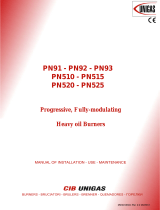 Unigas PN520 Manual Of Installation - Use - Maintenance
Unigas PN520 Manual Of Installation - Use - Maintenance
-
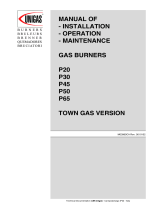 Unigas P50 Installation, Operation And Maintanance Manual
Unigas P50 Installation, Operation And Maintanance Manual
-
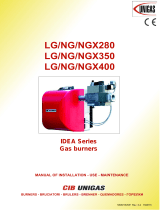 Unigas IDEA NGX350 Manual Of Installation - Use - Maintenance
Unigas IDEA NGX350 Manual Of Installation - Use - Maintenance
-
Hamworthy Shaftesbury HE series boiler gas oil fired cast iron sectional boilers Installation guide
-
Fulton J Series User manual
-
Cleaver-Brooks Profire LNE-420-3 Installation Operation & Maintenance
-
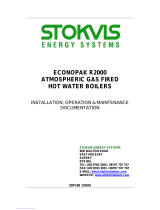 STOKVIS ENERGY SYSTEMS ECONOPAK R2000 Installation, Operation & Maintenance Documentation
STOKVIS ENERGY SYSTEMS ECONOPAK R2000 Installation, Operation & Maintenance Documentation
-
Riello GI/EMME 2000 TC FS1 3/230-400/50 230/50 Installer Manual
-
Fulton RB-RBC User manual
-
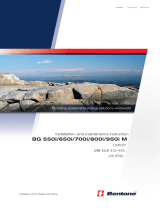 Bentone BG 550i-950i M LMV 412-420 J/K User manual
Bentone BG 550i-950i M LMV 412-420 J/K User manual
































































